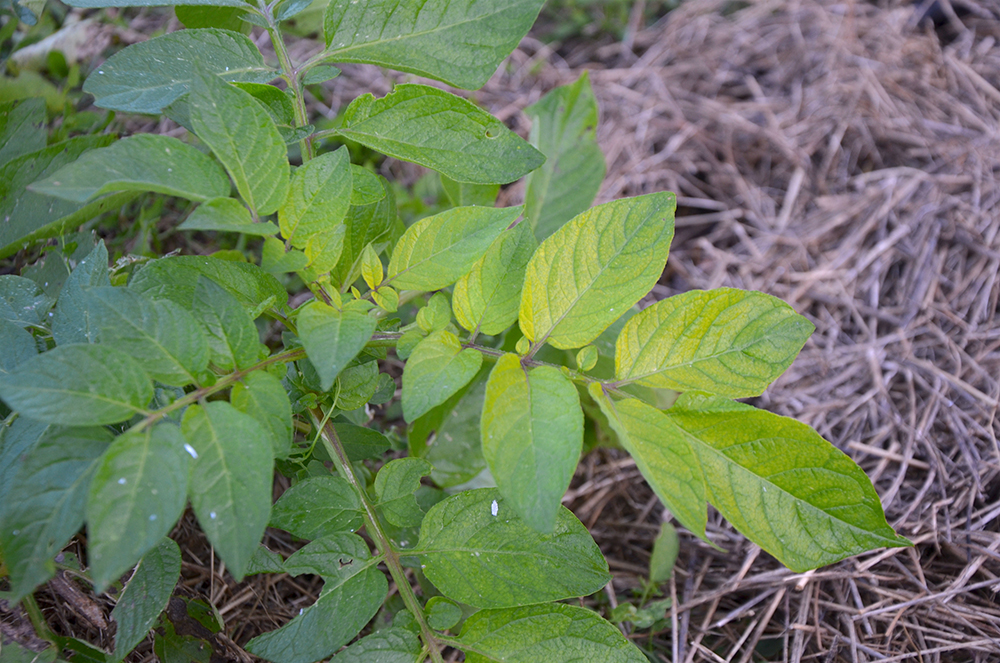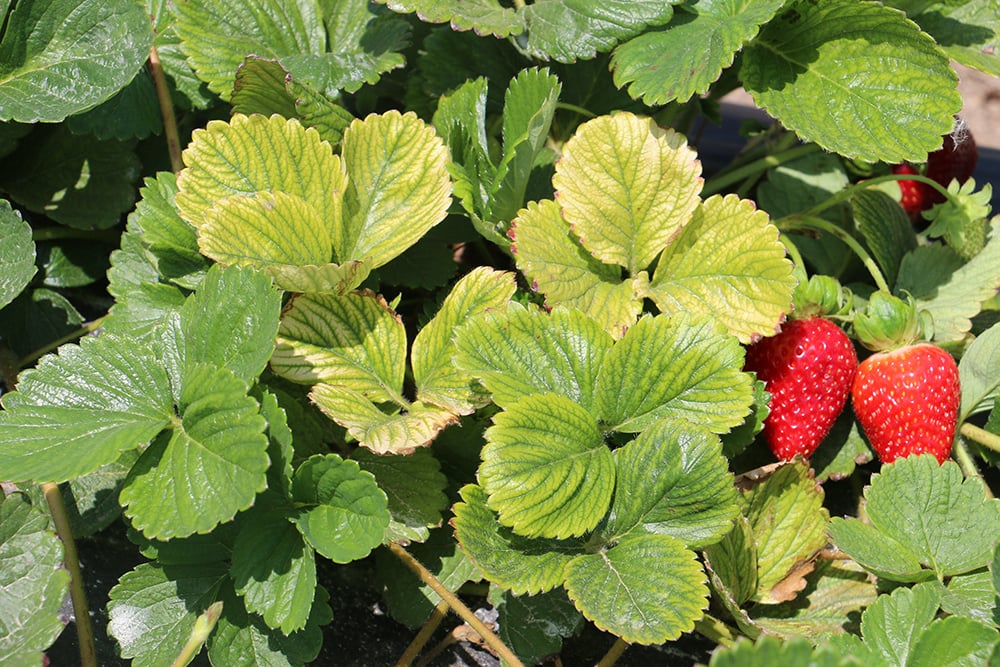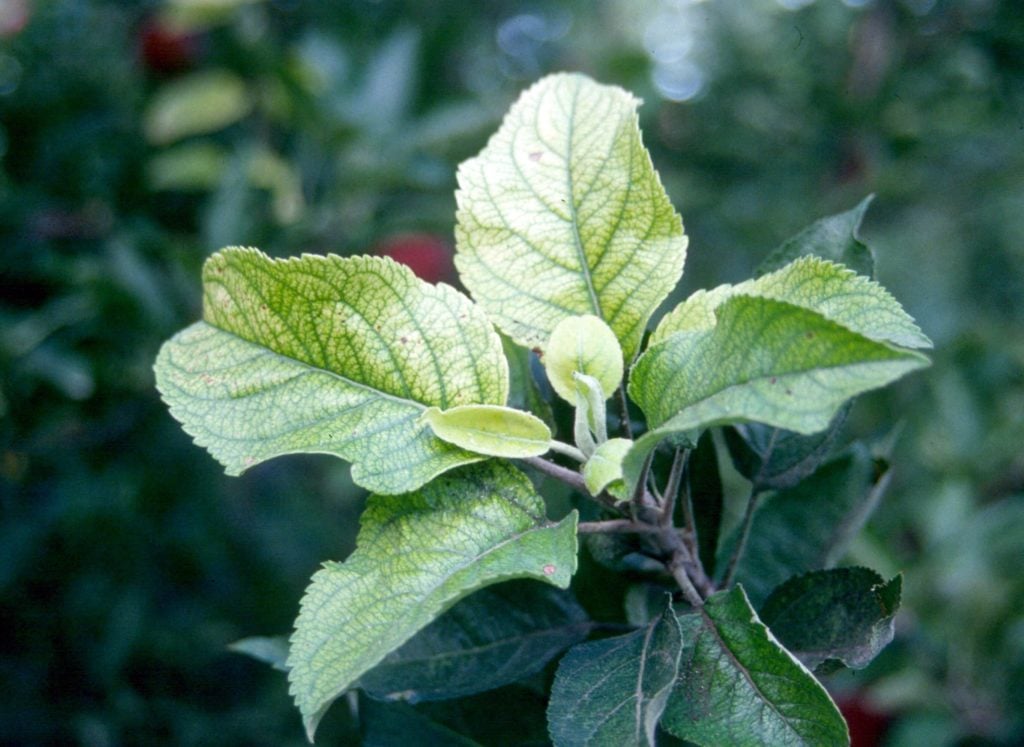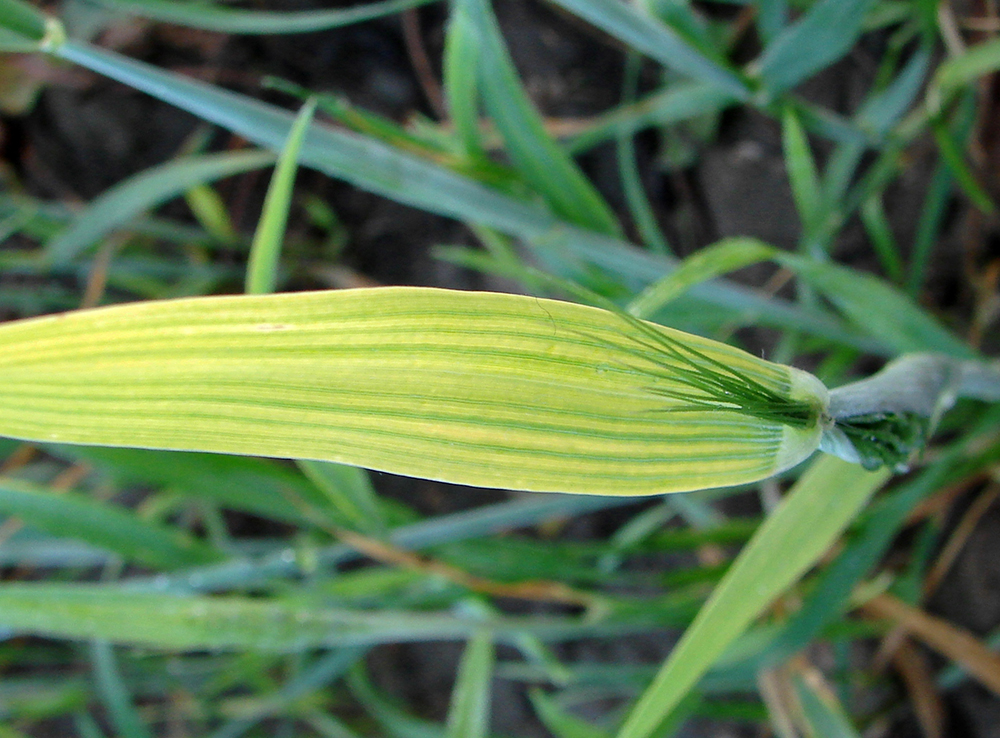Addressing trace element deficiency early in the crop cycle will stop the loss of yield potential. To keep the careful balance that a healthy crop needs, we’ve gathered the most common signs of Iron deficiency in plants.


Here we continue the discussion on how to fix Iron deficiency before they become yield-limiting.
Symptoms of Iron deficiency in crops
Iron (Fe) plays a crucial role in the process of photosynthesis to form chlorophyll and other pigments (carotenes and xanthophylls). Iron helps plant respiration by transporting oxygen. Also, it takes part in enzymatic functions, Nitrogen fixation, and protein metabolism.
The most general effect of Iron chlorosis appears in areas of the leaf base with strong chlorosis -especially in young leaves. Other side effects may follow, including a general lack of vigor. Iron shortage in plants may be induced by an abnormal presence of heavy metals. It tends to occur in calcareous soils and anaerobic conditions.
How to treat iron deficiency in plants
To treat Iron deficiency in plants, Van Iperen offers different chelates such as EDDHA, HBED, EDTA, IDHA, and DTPA, depending on the soil pH and application type. These solutions include the strongest chelates on the market. The chelate protects the Iron with an organic coating for improved uptake by the crop. Then the chelate releases the nutrient to be used by the plant. Learn how to choose an iron chelate here.
Van Iperen recommends analyzing the ground for trace element supply regularly. By doing so, growers can adjust crop nutrition plans for optimal yield, and crop quality, and monitor resources, ensuring soil supplies remain in balance.
Other micronutrient deficiencies can occur in crops (e.g. Boron, Molybdenum, Manganese, or Zinc, etc). For more info, you can read about these Trace Elements in plant nutrition and other nutrient deficiencies here.

